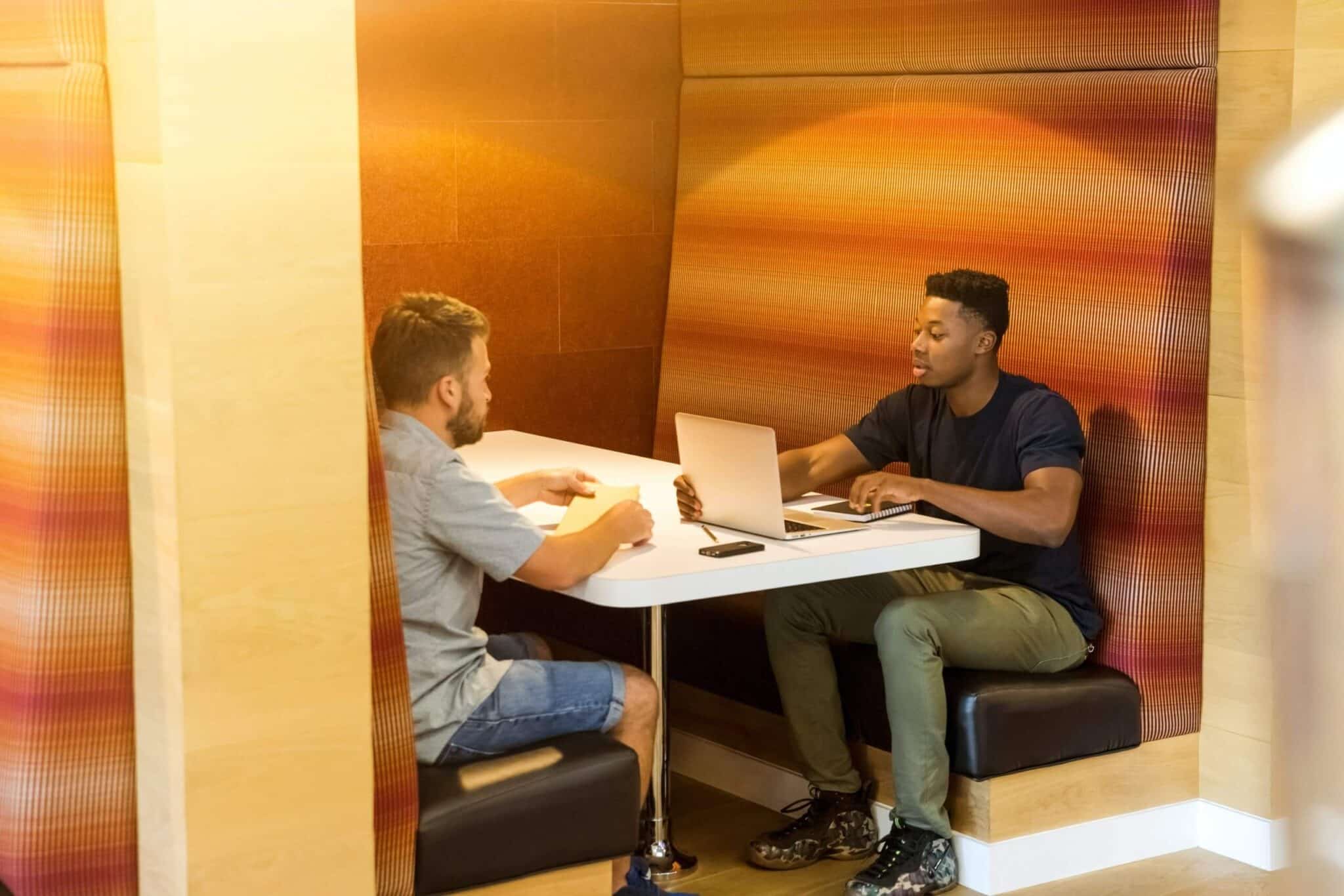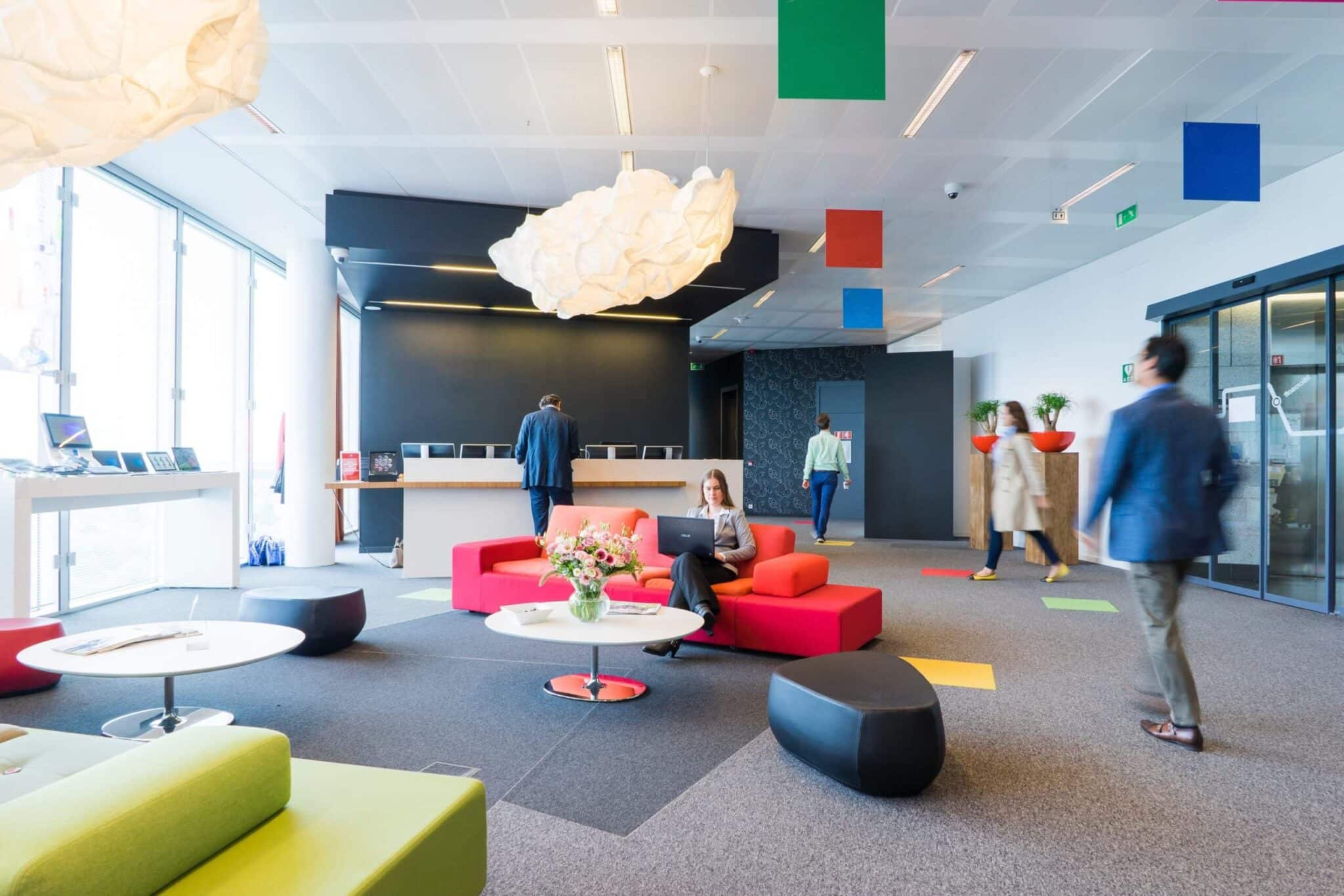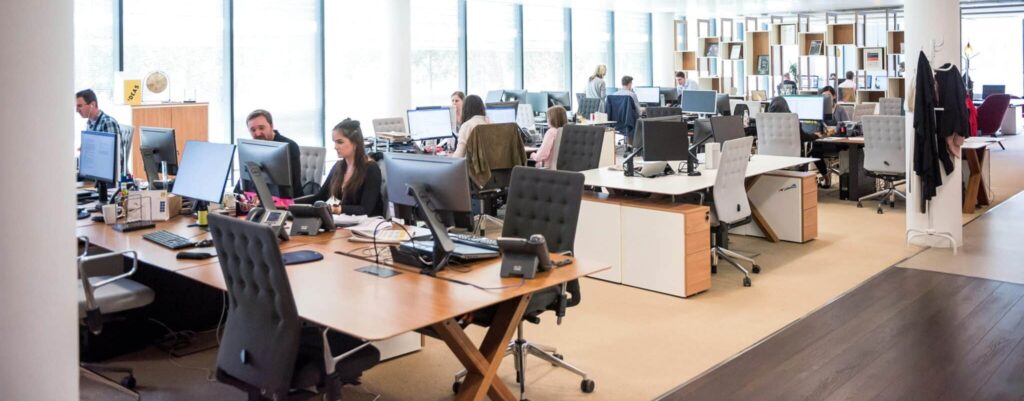Activity-based working: is ABW the future of the modern office?

What is activity-based working (ABW)? An activity-based workplace, working model, or workspace (ABW) is a space within an office that directly reflects the work. Activity-based workspaces encourage office workers to move throughout the workday and can affect major improvements to employee productivity, engagement, and job satisfaction.
Activity-based working is a growing phenomenon in office design and office culture that shifts away from static, 9-5 desk work and assigned desks, and towards adaptable workspaces where flexibility and collaboration are encouraged. It’s growing in popularity because employers and employees both know the truth: employees no longer need to be tethered to a desk (or any single access point) to get work done. And it just might be the demise of the office as we know it.
Why should employees be required to sit in the same spot all day when everyone knows the technology no longer requires that?
Harvard Business Review found that “a lack of flexibility can hurt the performance and productivity for as much as one-third of the workforce”. This includes the flexibility to work in various locations around the office.
We’ll show you that activity-based working will not only produce happier employees, but that the ABW environment can actually save you money as well, including real estate costs. And COVID-19 might provide the perfect opportunity to start making a plan.
In the age of work-from-home and COVID-19, how can you embrace activity-based working in your office or workspace?
Many people have been working from home during COVID-19. And now that companies are planning (or in the midst) of their return-to-office strategies, COVID-19 provides an opportunity to redesign and reimagine your office space and office layout with an activity-based work strategy.
Ask yourself: what can the office provide that your employees can’t get from their home office?
- Face-to-face collaboration: after several long months, many employees are ready for social interactions with their co-workers, and the added camaraderie and collaborating that comes along with it
- Ad-hoc meetings: in an active environment any space can be a meeting space—indoor or outdoor… whether it’s in the office or down the street at a coffee shop. This is especially relevant as many companies are eliminating the use of smaller spaces like small meeting rooms
- Informal interactions: new ideas can be generated and important information can get passed on that might otherwise get overlooked during formal meetings; lunchtime chats and random discussions in various places can lead to all sorts of important discoveries
- Certain spaces designed to do certain things: spaces are reflective of the activity that the work people need to do like desks for focused work, open space for collaborative work, phone booths for private calls, or other work areas for impromptu meetings; reconfigure desk arrangements and create new seating arrangements in meeting and presentation rooms
What needs to be done at the office? If an employee knows they need a full day of desk work, desk work can be done at home. This will provide more space for activity-based work at the office.

Cost savings: How activity-based working can save money
A study in Britain has shown operational costs were significantly reduced when switching to activity based working. Switching to an activity based work environment encourages collaboration in meeting rooms, lunch rooms, and other spaces that aren’t necessarily a traditional desk.
If employees can choose to move around throughout the day and switch up their work environment, they will not likely choose to sit down in one spot all day. And if they are not sitting in the same spot all day, this reduces the amount of required desk space.
If employees can do their silent solo work at home, this further reduces office overhead. McKinsey believes that there is a shift happening from well-defined occupations to project-based work. If employees are shifting to project-based work, shouldn’t they be able to move to the project and the people working on that project? By providing them the ability to move away from a single desk space, you are providing them the opportunity to produce more efficient work results.

How to begin making an office an activity-based working space
First of all, it’s important to remember that no two offices are identical. Every office will have unique needs based on the people, industry, space, and different tasks. A good place to start is consulting your employees! They intimately know the space, the needs of the employees, and they will know better than anyone how things could “flow” differently.
Next, identify what needs to change:
Is it just the physical, interior design of the office space? Collaboration spaces might look completely different from in the past. Employees will need more space wherever possible. You may have already embraced different types of work. You may already have an open office. And you have workplace design top of mind. So how can you use what you already have and already know to introduce a new type of work?
What about scheduling? In a post-COVID-19 office, it’ll be easier to create a comfortable activity-based workspace if you can stagger the times of various employees.
You may also have to change employee’s preconceptions. It may be difficult for some employees to imagine a work space that doesn’t involve sitting at a set desk all day.
According to Sandra Brunia, Iris De Been, and Theo J.M. van der Voordt, “well thought out spatial support of both communication and concentration” is critical to making a successful activity-based working environment.

Hurdles and roadblocks in activity-based working
COVID-19 poses a hurdle because of new social distancing and sanitization requirements:
- Meeting rooms and conference rooms might have to be more open
- Collaboration spaces might have to be bigger in an ABW office
- Shared or coworking desks may have to be cleaned after each use
- Cleaning costs for all offices will likely increase post-COVID-19
Office organization can be an issue. You need a work setting with space to move around and collaborate without disrupting others.
Square footage does not need to be a limiting factor! Collaboration can be done in board rooms, lunch tables anywhere. And if you introduce desk booking, everyone will know which spaces are being utilized at specific times. This allows employees to easily plan for collaboration or specific activities.

Tools that can help
- Move Manager to create a new floor plan
- Visual Directory to provide employees with the ability to book desks or rooms with interactive floor plans, accessible on any device
- Desk Booking to implement a desk booking or hot desking program that works for you and your team, and track desk usage to ensure your space reflects the needs of your team
- Room Booking to make sure employees can book any room at any time to reduce unwanted interactions while social distancing is required
- Shift Work to provide more space for employees
Activity-based working is the future of the modern office. It’s easy to understand why: happier, healthier employees are more productive employees, increasing employee satisfaction. A flexible environment is the future of work. The benefits of activity-based working ideally complement this new concept of hybrid. With a bit of planning right now, your employees could be returning to a responsive, adaptive, modern office environment, and a workplace strategy that benefits the way they work.
Are you thinking of making the shift, or has your company already started? Leave a comment below or send us a tweet.
Photos: Matthew Henry, LinkedIn Sales Navigator, Unsplash, Humphrey Muleba, OSS



